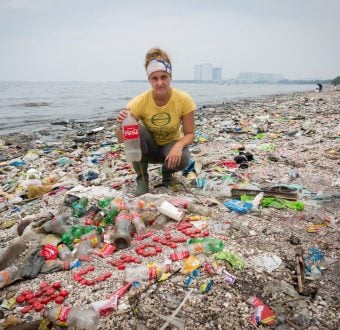“Most of the brands are responding to the more stringent
chemical and e-waste criteria in the Greenpeace Guide and the
recently added energy criteria,” said Iza Kruszewska, toxics
campaigner with Greenpeace International. “Top scorers on energy
efficiency of individual products are Apple, Nokia, Sony Ericsson
and Samsung. Toshiba has also improved its climate policy.”
Fujitsu Siemens Computers jumps to third place – up from 15th
place in June – with a score of 5.5 points. The company has finally
set late 2010 as its deadline for eliminating toxic PVC plastic and
all brominated flame retardants (BFRs) across its product range.
Sony Ericsson, the cell phone company, ranked fourth followed by
Sony, both scoring 5.3.
When burned, PVC releases dioxin, a well-known carcinogen.
Additional risk comes from phthalates, which are used to make PVC
malleable, but which are known to harm reproductive health.
Brominated flame retardants are reproductive and developmental
neurotoxins that can build up over time in the human body.
So far, no company has released a computer completely free of
BFRs and PVC, though several have recently launched new products
with restricted amounts. Last week, Apple CEO Steve Jobs announced
that the new iPod line will be free of BFRs, PVC and mercury,
following the lead of companies like Nokia and Sony Ericsson.
“This is a great step by Apple towards its commitment to
eliminate these toxic chemicals from all its products by the end of
2008,” said toxics campaigner Casey Harrell. “They should continue
this positive work and improve their ranking by announcing a free,
global recycling program.”
Philips stands out as the company with the worst position on
e-waste and recycling. It ranks 12th with 4.3 points, retaining its
penalty point for lobbying against Individual Producer
Responsibility for financing e-waste recycling in the European
Union.
Languishing at the bottom are Microsoft, which received 2.2;
Sharp, with a 3.1 ranking, and last, Nintendo with a dismal
0.8.
The Greenpeace Guide continues to drive significant improvement
in the industry. In addition to the above moves, Intel’s recent
announcement that its new Xeon 5400 processors use transistors made
from Hafnium, thereby avoiding the use of fire retardants such as
BFRs.
VVPR info: Contacts: Daniel Kessler, Media Officer, (970) 690-2728; Jane Kochersperger, Media Officer, (202) 319-2493; Casey Harrell, Toxics Campaigner, (415) 307-3382
Notes: The latest Greenpeace Guide to Greener Electronics can be found at: https://www.greenpeace.org/usa/press-center/reports4/guide-to-greener-electronics-9

